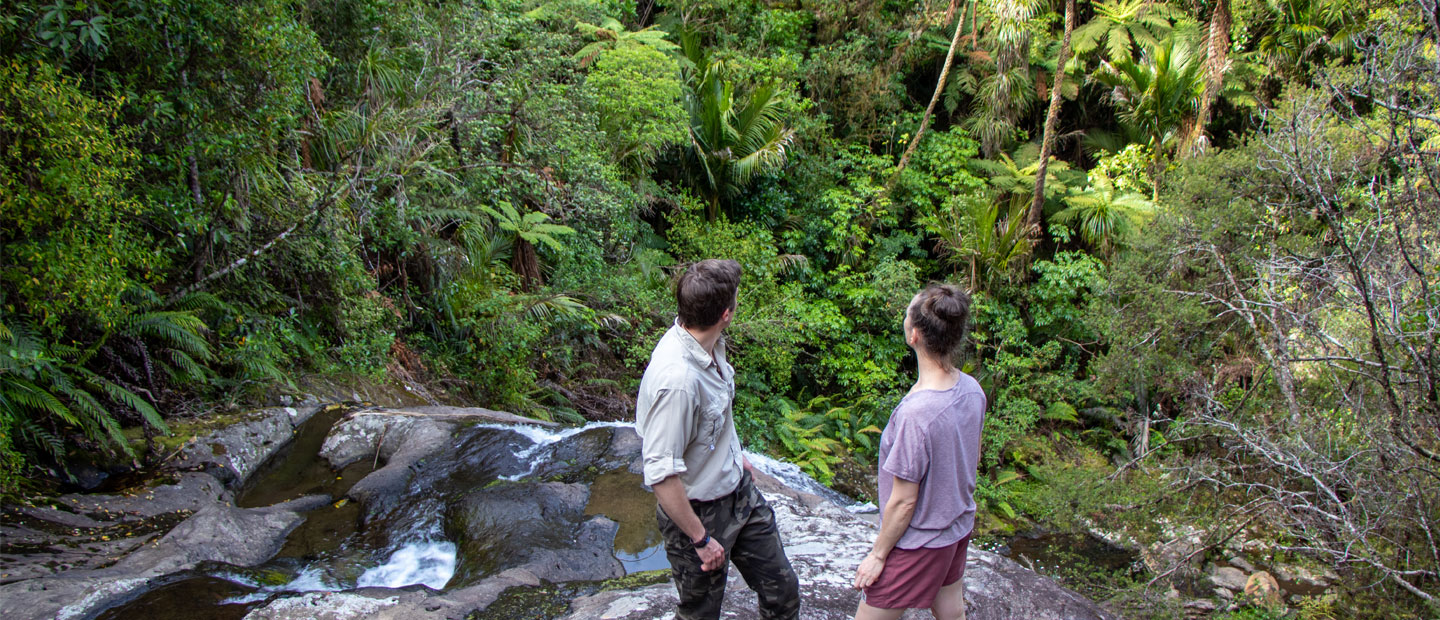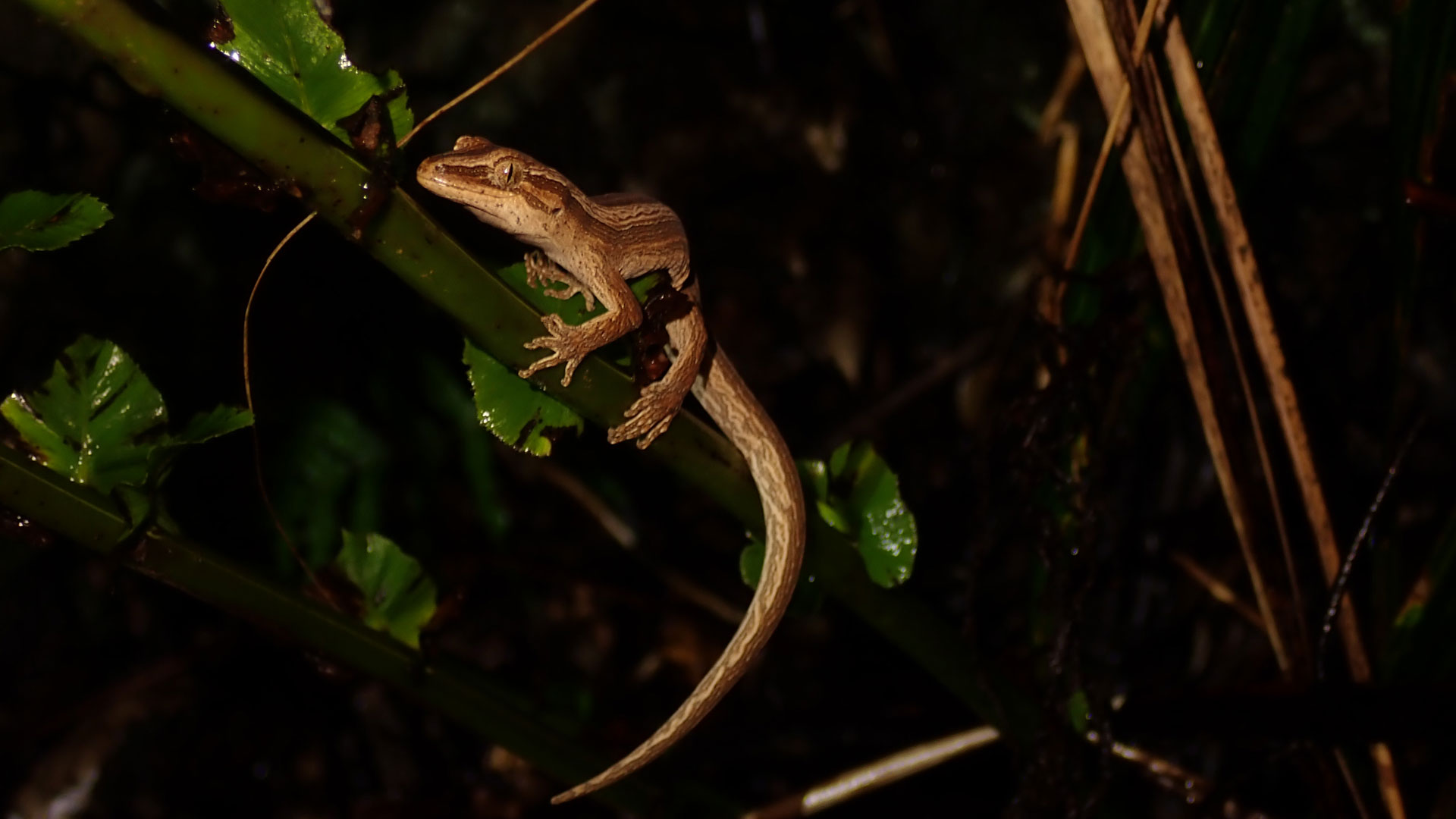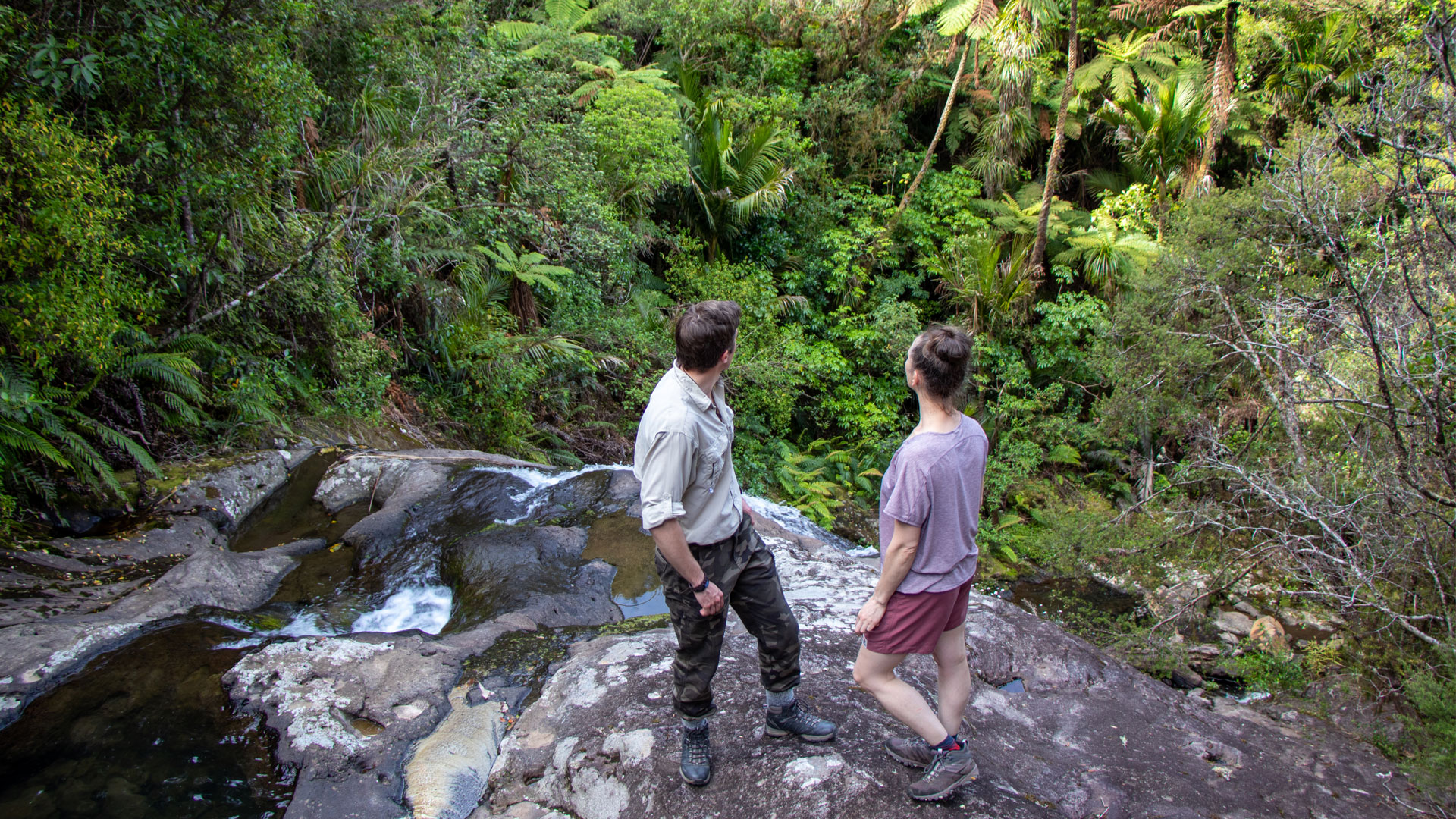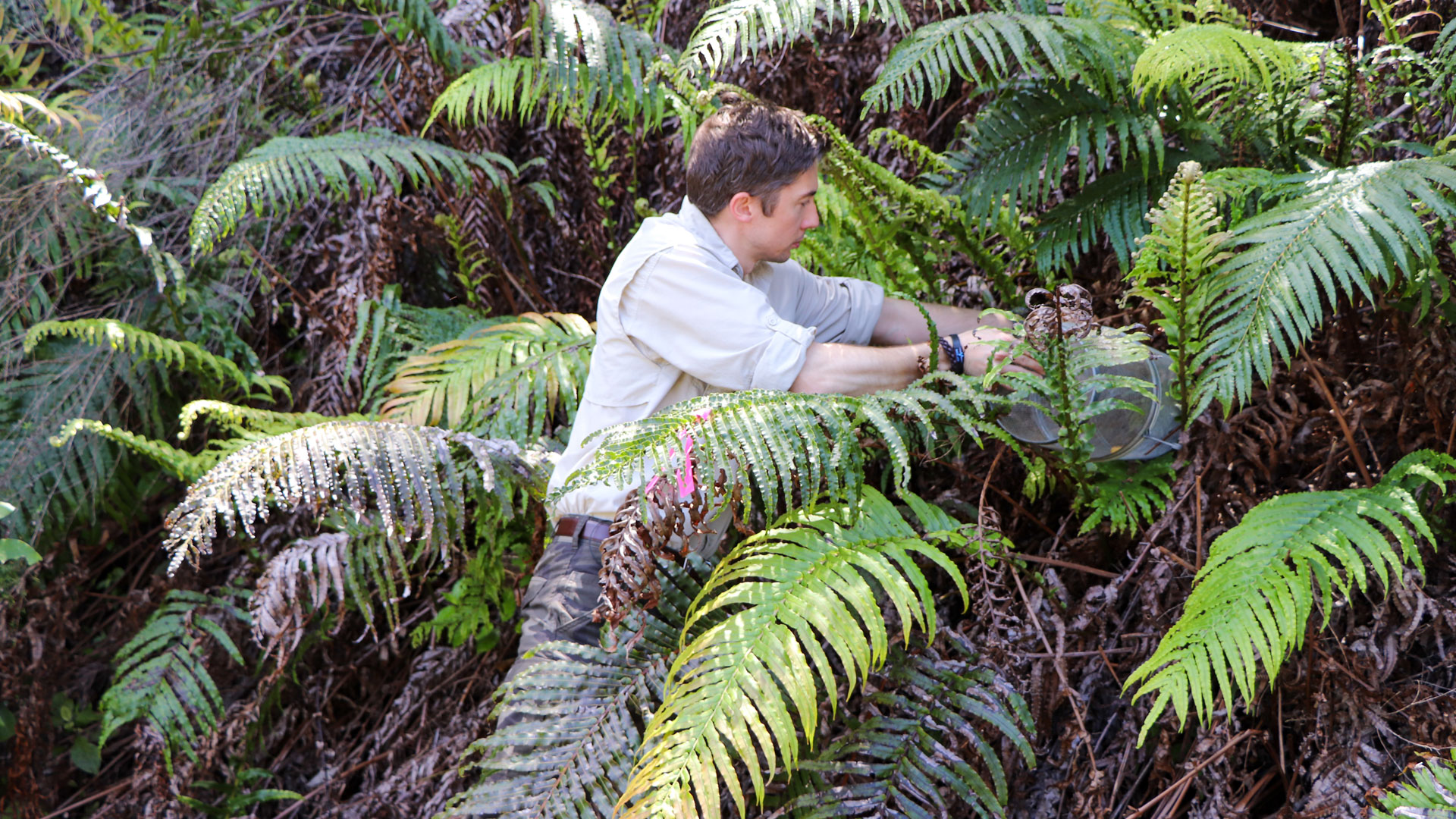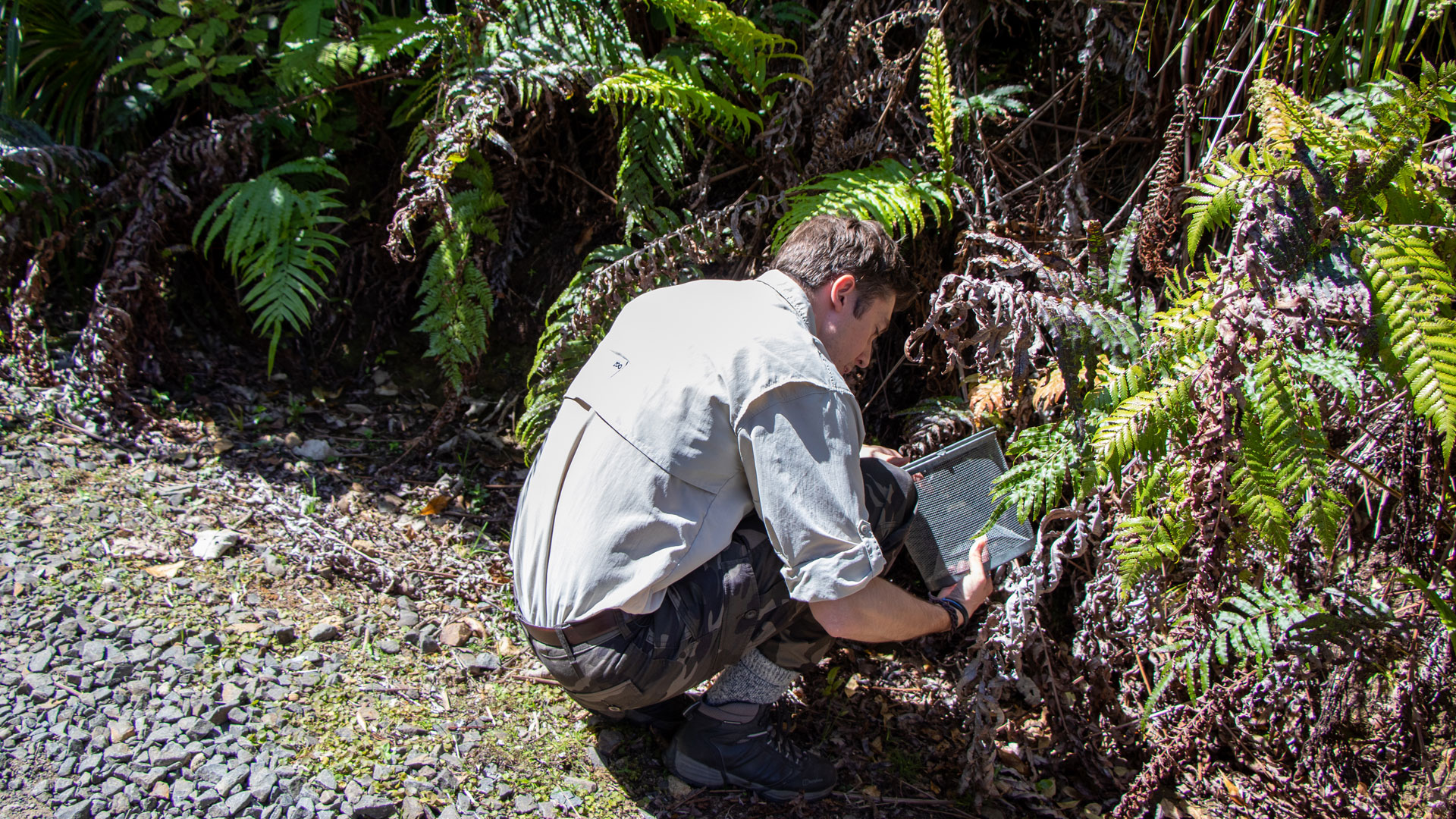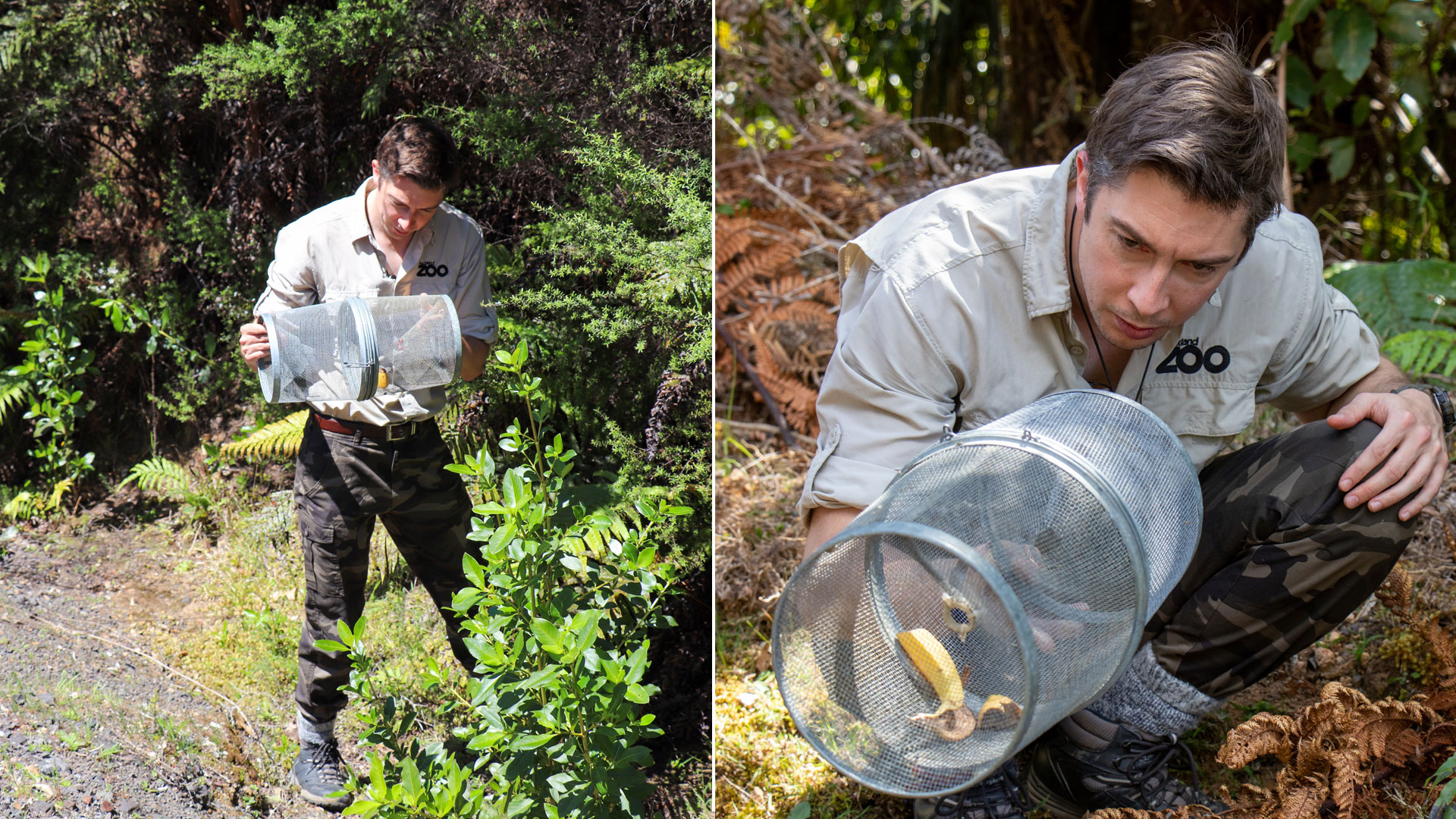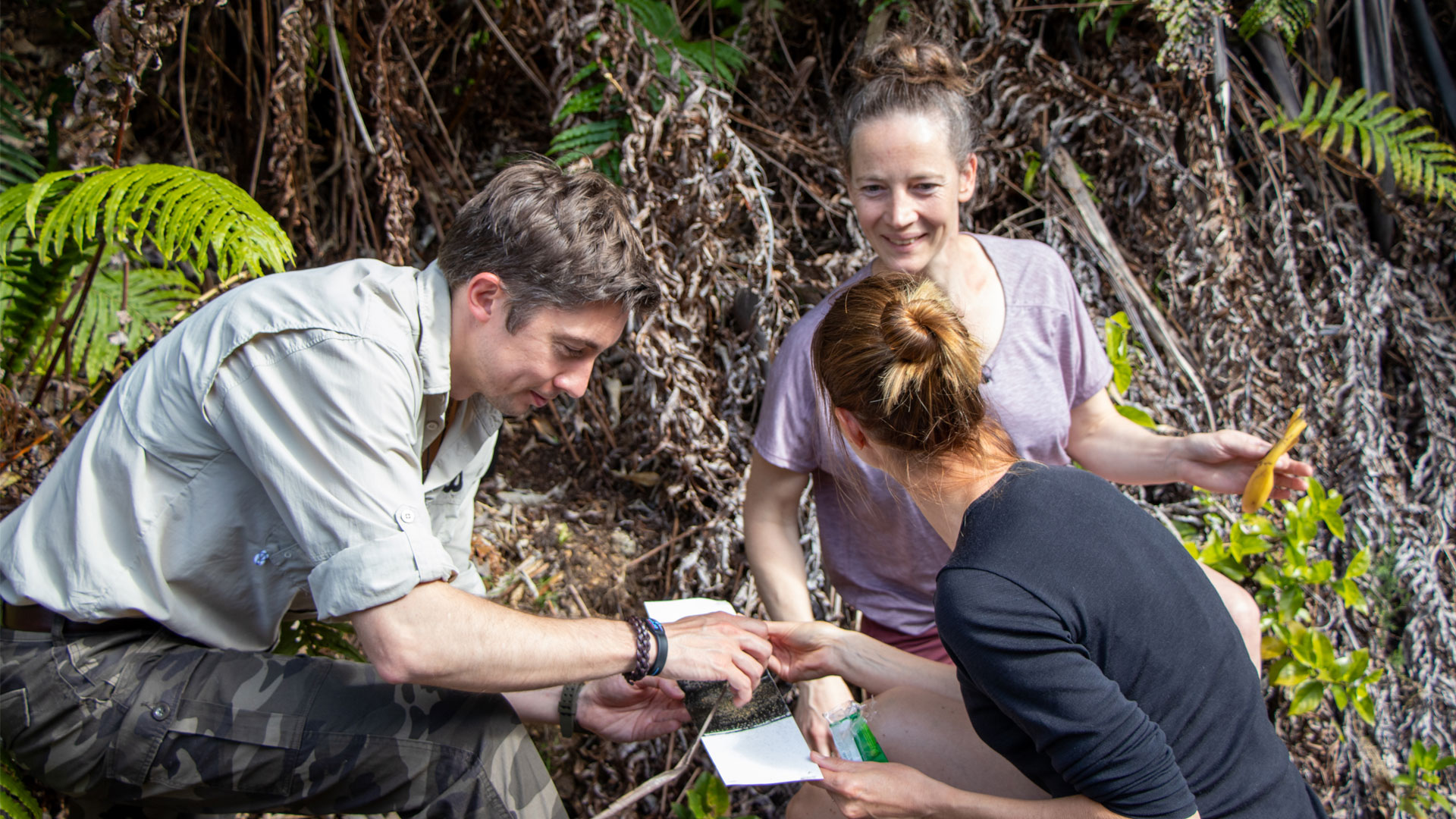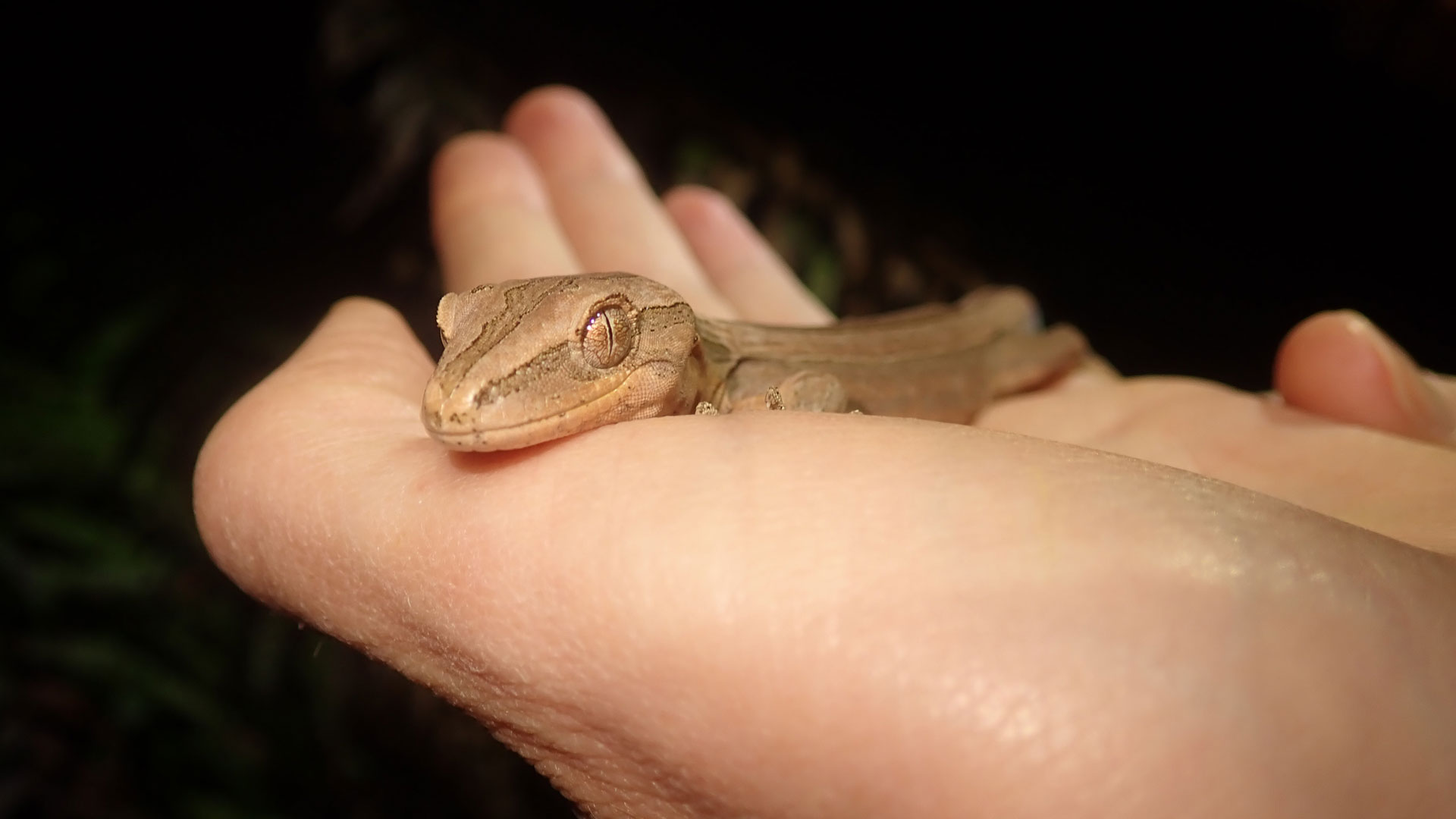Deep in the native bush, under the cover of night, there are plenty of sights and sounds to be astounded by. As Ectotherm Keeper Nick Reynolds says, “If you know where to look, it’s a full show”. During the day, the forest is alive with birdsong, but as night falls the nocturnal animals come out, and under torchlight the eye-shine and light reflecting off an orb-weaver’s web, reminds us who’s home we are entering, and that we are not alone.
Video
Searching for an elusive New Zealand gecko
Follow our ectotherm experts as they search the native forest at Mahakirau Forest Estate looking for the cryptic northern striped gecko.
Four times a year, ectotherm keepers from Auckland Zoo meet up with Sara and her neighbours from the Mahakirau Forest Estate, to search for and collect data on an elusive New Zealand gecko. The northern striped gecko was discovered and determined to be a new species back in 1997, and since then an investigation began to learn as much as we possibly can about these special creatures. It is still unclear how rare these geckos are but the first step to saving a species is to know everything you possibly can about them: what it eats; who its predators are; the types of climate and humidity it lives in – the list is endless.
“There’s always a magic, and excitement to discovering a new species, but that does melt away slightly when you realise how much work now has to be done to find out about the species. It blows your mind to think what else is out there, and also how it evolved to live in the area,” Nick says.
Traipsing through the bush at night at 1am – it’s unimaginable how these experts actually spot these tiny geckos, barely the size of my thumb. When asking Nick how he does it, he explains there is almost an art to it, getting your eye in on the types of plants that look ‘gecko-y’. Every time one is found, the plan is to GPS it, photograph where it was found, and then this data collection will start to form a vital trend.
We search the banks of the roadside, and within 10 minutes our first gecko is found. The excitement is palpable, partly due to having a win, but also because after a drought it is exhilarating to see that the geckos are surviving, and by the size of the one we found – they are breeding! Body measurements are recorded, photos are taken for a gecko ‘catalogue’, and the humidity and temperature are documented. Due to the unique markings each gecko has on its head, it is plainly obvious (to an expert eye) whether a gecko is ever recaptured or if it is a new one, and if it’s the former that then provides the team with another variety of data: how fast they grow; their range; how much they change. The gecko is then carefully placed back on the same plant it was found on, and left to carry on with its night.
As we leave the bankside behind, we descend deeper into the bush, past Archey’s frogs (masters of camouflage and the smallest of our rare endemic frogs), varieties of spiders, a suspended wētā shedding its exoskeleton along with wētā of the ‘tree’ and ‘cave’ sub-species, and even the chrysalis of a forest ringlet butterfly (incredibly rare and on the edge of extinction). It’s a fascinating experience, knowing how rare it is to see all of these beautiful animals, let alone in succession, in our native forests, only lit up by our head torches, and at times, simply a constellation of stars and moonlight.
Mahakirau Forest Estate is 600 stunning hectares of private land in the Coromandel. It’s a project that just goes to show how incredible our native bush is, and can be, when intensive predator control programmes are in place. Sara and the residents of this area have what they consider to be a symbiotic relationship with the land, they more time they dedicate to protecting it, the more it gives back to them.
Studying, researching, and surveying these beautiful geckos is imperative in order to learn how to save them if and when required, but also on a more structured level, every species in the world is given a status to indicate its vulnerability to extinction, so without this work feeding into its ‘status’, it would not get the help it needs and the global recognition it deserves.
“It's a great privilege to be out here, but it's also very warming to think that I'm contributing. Along with Auckland Zoo, we're all trying to do our bit and trying to save the beautiful planet that is our home,” says Nick.


